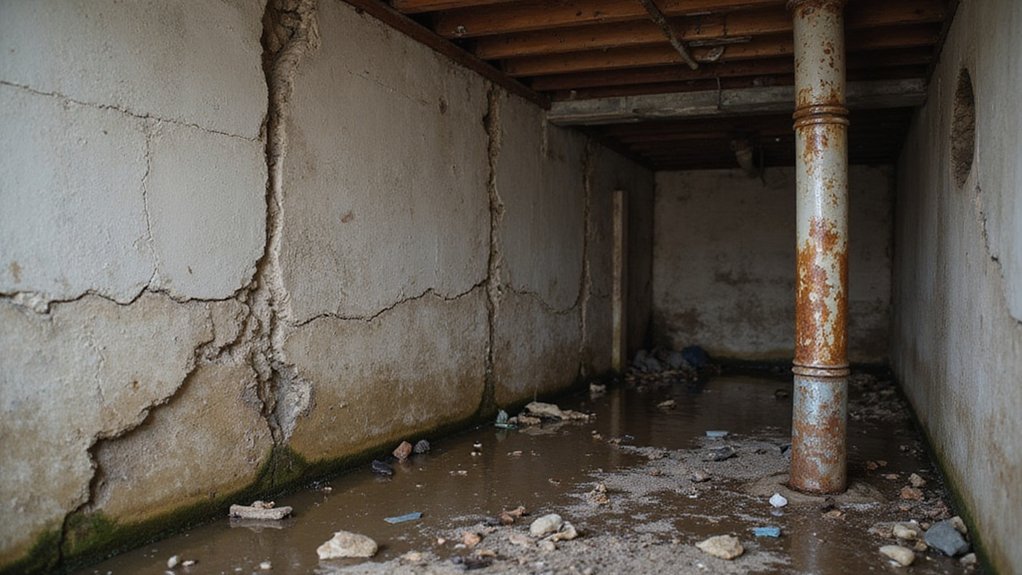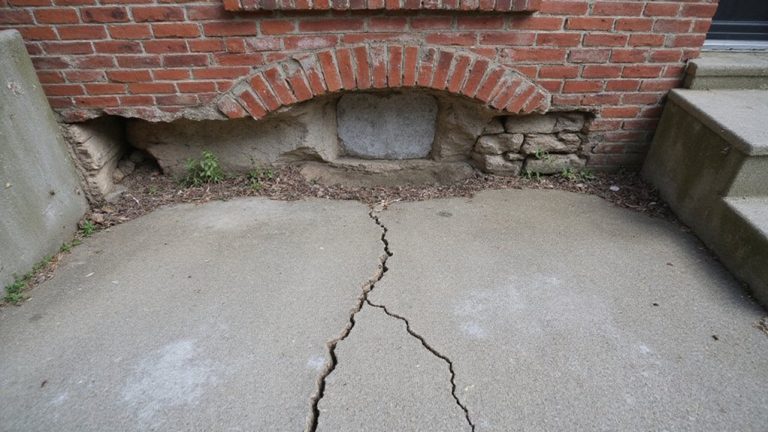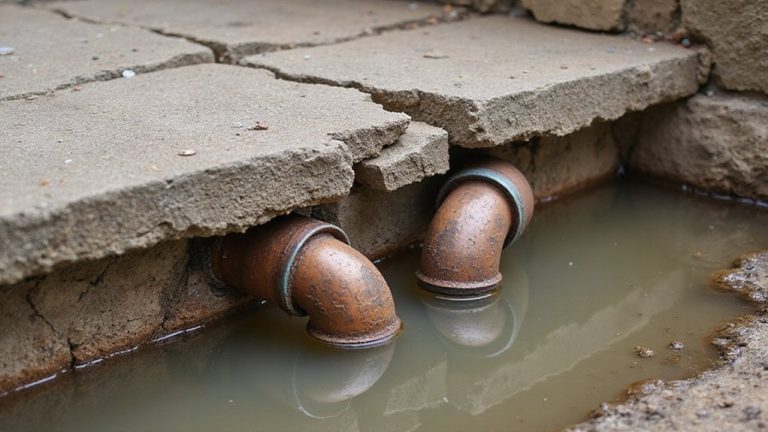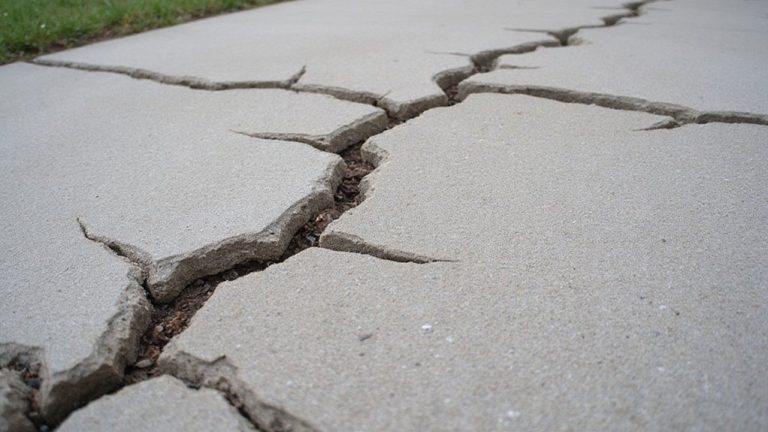Your basement is the foundation of your home, but it’s also vulnerable to a hidden threat: hydrostatic pressure. As the water table fluctuates and soil composition changes, this invisible force can exert significant pressure on your basement walls and floors, leading to cracks, leaks, and structural instability. Recognizing the early signs is paramount, as addressing hydrostatic pressure issues before they escalate can save you from costly and extensive repairs down the line. Delving deeper into the causes and consequences of this phenomenon could be the key to protecting the integrity of your home.
Understanding Hydrostatic Pressure
Hydrostatic pressure is a force that every homeowner with a basement should understand. This pressure is created by the weight of the water in the soil surrounding your home’s foundation. As the water table fluctuates or the soil composition varies, this pressure can build up and exert significant force on your basement walls and floor. Free foundation inspections can help identify potential issues before they become more costly to repair.
Ignoring hydrostatic pressure can lead to cracks, leaks, and even structural damage over time. Understanding this phenomenon can help you take proactive steps to protect your home and avoid costly repairs. Staying informed about hydrostatic pressure is essential for maintaining a dry, secure basement.
Causes of Hydrostatic Pressure
Although hydrostatic pressure may seem like a complex issue, its causes are often quite straightforward. Groundwater flow patterns and seasonal water table fluctuations are the primary culprits. Significant cracking requires stabilization by a certified foundation contractor, which can help mitigate the effects of hydrostatic pressure. As groundwater flows through the soil, it can exert significant pressure on your basement walls and floor. This pressure can increase dramatically during wet seasons when the water table rises, pushing more water against your home’s foundation. Comprehending these underlying factors is vital to addressing hydrostatic pressure and safeguarding your basement from potential damage. With the right approach, you can mitigate this common yet concerning issue.
Potential Basement Damage From Hydrostatic Pressure
If left unchecked, the immense pressure exerted by rising groundwater can wreak havoc on your basement. Potential damage includes:
- Cracks in the foundation walls and floor, allowing more groundwater seepage.
- Bowing or bulging of the basement walls due to the saturated soil conditions.
- Water damage to your belongings and potential mold growth.
- Structural instability that can compromise the safety and integrity of your entire home.
Addressing hydrostatic pressure swiftly is vital to prevent costly repairs and safeguard your investment. Proactive measures, such as proper drainage and waterproofing, can mitigate the risk and protect your basement from the detrimental effects of groundwater.
Signs of Hydrostatic Pressure Issues
Recognizing the signs of hydrostatic pressure issues can help you address the problem before it causes extensive damage to your basement. Damp walls, cracks in floors, and other visible signs indicate that water is putting pressure on your basement’s structure.
This hydrostatic pressure can lead to cracks, heaving floors, and even structural failure if left unchecked. Don’t wait until the problem becomes severe – be proactive in identifying and addressing the signs of hydrostatic pressure. By taking action now, you can protect your home and avoid costly repairs down the line.
Assessing the Risks to Your Basement
Evaluating the risks to your basement is critical to addressing any hydrostatic pressure problems efficiently. Understanding the factors that contribute to this issue can help you develop an effective mitigation plan.
Key considerations include:
- Soil saturation levels: Evaluate the moisture content of the soil surrounding your basement. High saturation can indicate a rising groundwater table.
- Groundwater table depth: Determine the depth of the groundwater table in your area. The closer it’s to your basement’s foundation, the greater the risk of hydrostatic pressure buildup.
- Basement structure: Assess the condition and integrity of your basement walls and floor, as cracks or damage can allow water intrusion.
- Drainage system: Inspect your home’s drainage system to guarantee it’s functioning correctly and diverting water away from the basement.
Strategies for Hydrostatic Pressure Mitigation
Often, addressing hydrostatic pressure in your basement requires a multi-pronged approach. Exterior drainage solutions, like French drains and weeping tiles, can divert groundwater away from your foundation.
Interior drainage systems, such as sump pumps and interior drain tiles, can effectively manage water intrusion. These systems work together to alleviate the pressure, preventing costly and potentially dangerous basement leaks and flooding.
While the initial investment may seem formidable, taking proactive steps to mitigate hydrostatic pressure can safeguard your home, protect your belongings, and give you peace of mind. Consult professionals to determine the best strategy for your basement.
Importance of Professional Basement Waterproofing
While the initial investment in professional basement waterproofing may seem formidable, it’s a vital step in safeguarding your home and protecting your family.
Professional waterproofing addresses essential basement moisture concerns, including:
- Identifying and sealing cracks or gaps in the foundation that allow water intrusion.
- Implementing effective drainage systems to divert groundwater away from your home’s structure.
- Applying specialized coatings or membranes to create a reliable barrier against hydrostatic pressure.
- Ensuring proper ventilation to maintain a dry, healthy environment in your basement.
Frequently Asked Questions
Can Hydrostatic Pressure Cause Cracks in Concrete Floors?
Yes, hydrostatic pressure can damage your concrete floor’s durability and lead to water infiltration. The pressure buildup can cause cracks, compromising the floor’s integrity and allowing water to seep through.
Does Hydrostatic Pressure Affect Finished Basements Differently?
Hydrostatic pressure can profoundly impact finished basements, affecting moisture levels and overall basement conditions. It’s vital to address hydrostatic pressure issues swiftly to maintain a dry, comfortable living space.
How Long Does Hydrostatic Pressure Take to Damage a Basement?
Fluctuating groundwater levels and excessive moisture buildup can gradually damage your basement over time. Hydrostatic pressure from these forces may intrude your home, causing cracks and leaks that worsen if left unchecked.
Can Hydrostatic Pressure Issues Be Prevented by Homeowners?
Yes, you can prevent hydrostatic pressure issues by installing a proper drainage system and implementing effective groundwater management strategies. These proactive measures can safeguard your home’s foundation and verify it remains dry and secure.
Is Professional Basement Waterproofing the Only Solution for Hydrostatic Pressure?
Professional basement waterproofing isn’t the only solution for hydrostatic pressure. You can also install a sump pump or investigate exterior drainage solutions to manage the issue and keep your basement dry.



